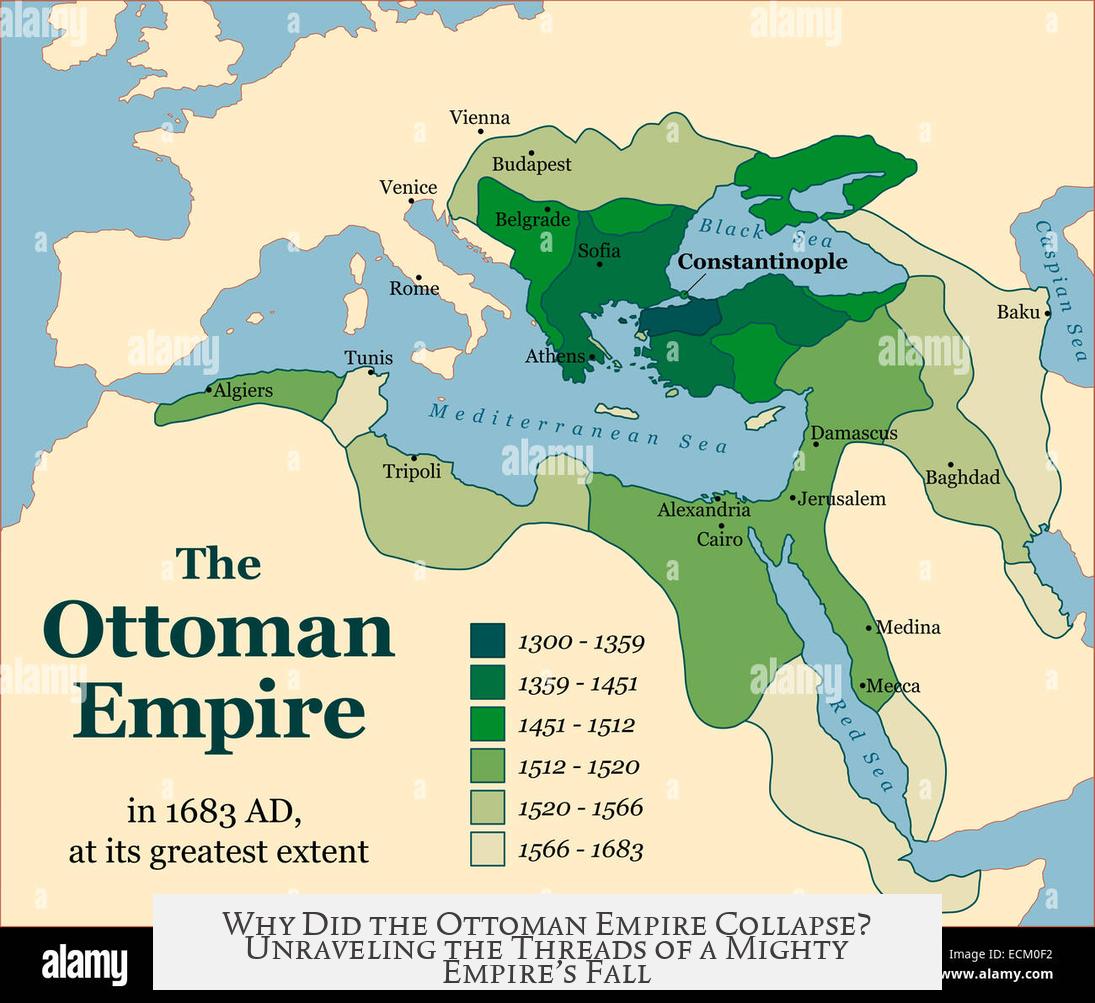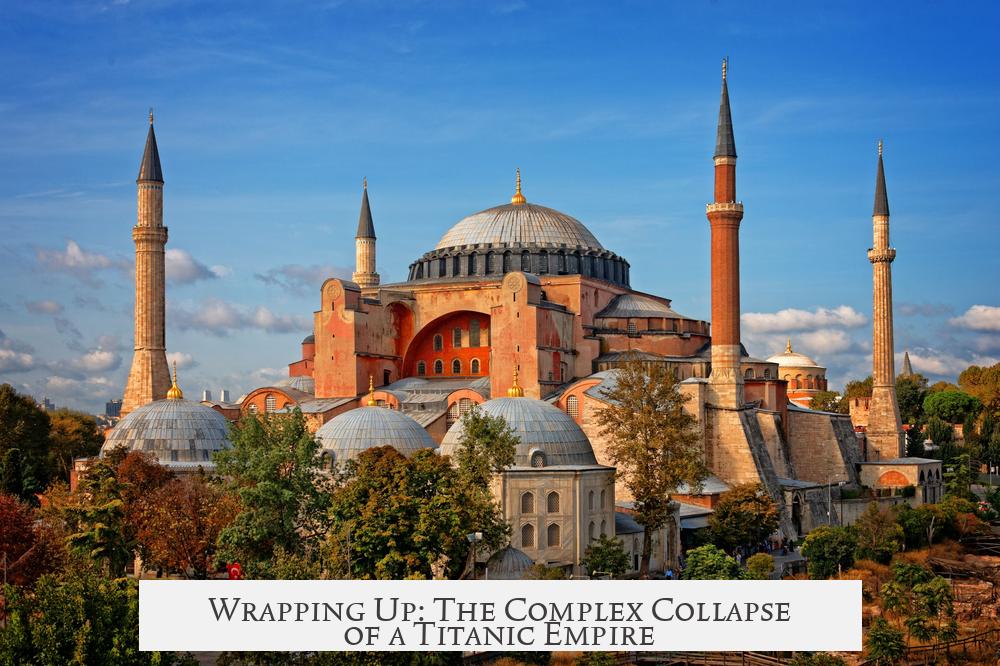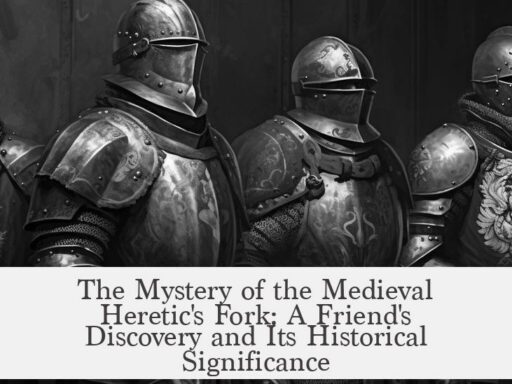The Ottoman Empire collapsed due to a combination of long-term internal challenges, external pressures, and the decisive impact of World War I. Its decline was neither inevitable nor linear but resulted from complex political, military, economic, and social factors interacting over centuries and climaxing in the early 20th century.
Historians often challenge the stereotype that the empire was in continual decline since the failed 1683 siege of Vienna. Instead, the empire experienced periods of strength and weakness. This view shifts away from the simplistic “Sick Man of Europe” narrative to one acknowledging episodic challenges and attempts at reform. The collapse is now understood as accelerated by early 20th-century crises rather than centuries of steady decay.
Nationalism emerged as a major destabilizing force, particularly in the Balkan territories. While ethnic tensions existed for decades, nationalist movements gained critical momentum during and after World War I, awakening Turkish nationalism alongside dissent among Arabs and Balkan peoples. European powers exacerbated these divisions through diplomatic promises and interventions. For instance, Britain encouraged Arab revolts by promising independence, though widespread Arab support for the Great Arab Revolt did not materialize. This fragmentation undermined the empire’s multi-ethnic fabric and territorial integrity over time.
Military factors played a crucial role. Earlier problems like the Janissaries’ resistance to modernization were addressed by the 19th century through reforms initiated by the Young Turks. The Ottoman military was professionalizing and equipped with modern German weaponry, as seen in their strong resistance at Gallipoli during World War I. However, catastrophic campaigns, poor leadership (notably under Enver Pasha), and the empire’s entry into the war on the losing side fatally weakened military capacity. Continuous demand for conquest became untenable, especially as nationalist insurrections shrank the empire’s borders.
The economy suffered from external geopolitical shifts. The rise of British naval power and Russian routes diminished the Ottomans’ strategic position in trade. Industrial advances and larger ships rendered traditional Silk Road routes obsolete, cutting into revenue. Inflation caused by influxes of Spanish silver contributed to economic hardships. The empire accrued massive debts, heavily dependent on Britain’s reluctant financial support. Internally, the economy lagged behind Western Europe, stuck in guild-dominated structures unable to compete with modern capitalist economies.
Politically, emancipation attempts such as the Tanzimat reforms and constitutional periods aimed to modernize governance. The Young Turks moved to professionalize administration and align the empire with contemporary standards. Yet internal conservatism posed barriers. Influences within the harem, religious authorities (Ulema), and resistant elites inhibited meaningful change. Corruption was endemic, as power struggles among elites drained resources. This political stagnation eroded central authority and public trust.
World War I proved the proximate cause of collapse. It precipitated the final unraveling by accelerating nationalist uprisings, destroying military strength, and causing territorial dismemberment. The empire’s alliance with the Central Powers and declaration of war on Britain forfeited neutrality and international support. Postwar treaties (such as the Treaty of Sèvres) aimed to carve up Ottoman lands, creating new nations without local consent. The empire lost critical territories while military defeat and internal dissent compounded its downfall.
Other contributing factors include the sheer unwieldy size of the empire, making defense difficult amidst rising local nationalisms. European imperial competition further encroached on Ottoman influence and trade relevance. Technological backwardness—late adoption of inventions like the printing press—and a distinctive social structure differing from European models slowed political and economic adaptation. The empire’s traditional systems clashed with modern state-building demands.
| Factor | Impact |
|---|---|
| Nationalism | Awakening during WWI destabilized multi-ethnic cohesion and territorial control. |
| Military | Modernized but ultimately weakened by catastrophic WWI campaigns and leadership failures. |
| Economy | Declined due to loss of trade routes, inflation, debt, and inability to adapt to industrial economy. |
| Political Reform | Efforts undertaken but undermined by conservative resistance and elite corruption. |
| World War I | Accelerated collapse via military defeat, nationalist revolts, and postwar partition. |
Key takeaways:
- The empire’s decline was not a simple, continuous process but featured episodes of reform and resilience.
- Nationalist movements, especially in the Balkans and Arab lands, fractured the empire’s unity, intensified by European interference.
- Military modernization occurred but was insufficient to overcome wartime failures and leadership flaws.
- Economic shifts reduced Ottoman trade importance and caused financial dependence on British support.
- Political reforms faced resistance from conservative elites and religious factions limiting transformative change.
- World War I was the immediate trigger that dismantled the empire through defeat, loss of territories, and international agreements partitioning its remnants.
Why Did the Ottoman Empire Collapse? Unraveling the Threads of a Mighty Empire’s Fall

The Ottoman Empire did not collapse overnight or because of a single catastrophic event. It was a tangled web of political, economic, military, and social issues, layered with misconceptions and historical drama. The fall was like an epic Netflix series with many plot twists—some slow burns, others intense cliffhangers.
So, why did this once-mighty empire—stretching across three continents for over six centuries—finally bite the dust? Let’s dive into the fascinating cocktail of causes that brewed the empire’s downfall.
The Misconception of Inevitable Decline: Was the Ottoman Empire Truly “Sick”?
One common myth is that the Ottoman Empire was doomed to decline starting when it failed to seize Vienna in 1683. This “Sick Man of Europe” label stuck like a bad reputation at a family reunion. But historians argue this decline narrative oversimplifies the reality. From 1683 to its dissolution in the early 20th century, the empire actually experienced ebbs and flows—not a steady downward spiral.
“The empire was actually handling much of its long-term challenges pretty well for a considerable time,” some historians point out. It faced ups and downs, much like other empires, rather than a straightforward decline stretching back centuries.
Think of it like a marathon runner who stumbles a few times but keeps going, rather than someone who trips and collapses immediately. The Ottoman story was more episodic than linear.
Nationhood and Ethnic Tensions: The Empire’s Puzzle That Didn’t Quite Fit
Nationalism was the wildfire in the 19th and 20th centuries that deeply affected the Ottoman Empire. Surprisingly, for most of its history, nationalism wasn’t a significant problem—except in the Balkans region.
When nationalism finally blossomed, it was partially awakened by World War I. This conflict acted like a match to dry tinder, igniting ethnic and nationalist sentiments across the empire’s diverse peoples. Turkish nationalism emerged alongside Arab and Balkan movements, complicating loyalties.
European powers, especially Russia and Britain, played arsonists in this scenario, stoking ethnic sentiments to weaken Ottoman control. The British, particularly, made grand promises of Arab independence if local leaders revolted against Ottoman rule—sparking revolts like the Great Arab Revolt.
But here’s a twist: not all Arabs cheered the revolt. The empire’s diverse population didn’t have a unanimous breakup party. Local realities varied widely, defying simple narratives.
Military Dynamics: From Janissaries to Modernization
The Ottoman military was historically formidable. However, its decline in early modern times was marked by the Janissaries—a once-elite corps that morphed into a conservative, obstructionist force resistant to change.
Eventually, the Janissaries were dismantled in the 19th century, paving the way for professional and modernized forces. The Young Turks reform movement pushed modernization through, arming their soldiers with advanced German weapons and reorganizing administration.
Despite this modernization, the empire’s involvement in World War I proved disastrous. The campaigns run under Enver Pasha, a key Ottoman military leader, were costly and often failed strategically. The army depended on expansionist ambitions to sustain itself, but the rise of independence movements, supported by European powers, shrunk Ottoman territory instead.
A particularly shining moment came with the Battle of Gallipoli, where the Ottomans held their ground, demonstrating their military resilience despite broader losses.
Economic and Geopolitical Shifts: Losing the Golden Routes

Long before the guns fell silent, economic realities started strangling the empire’s wealth. The Industrial Revolution changed global trade routes. Previously, Ottoman lands benefited immensely as a key passage for goods along the Silk Road, primarily funneled through Alexandria and Anatolia.
New routes around Africa and through Siberia diminished Ottoman trade income significantly. Additionally, larger ships bypassed old trading hubs, undercutting traditional Ottoman wealth sources.
Inflation from global events like the influx of Spanish silver and excessive Ottoman debt made finances unstable. The empire became dependent on loans, with Britain propping it up financially—keen to avoid a chaotic collapse that could shift the power balance in Europe.
The economic system itself contributed to stagnation. Dominance by traditional guilds hampered industrial growth, while Western Europe surged ahead economically.
Politics and Governance: Reform, Resistance, and Intrigue
The Ottomans tried to reform. The Tanzimat reforms in the 19th century and later constitutional efforts were attempts to modernize and centralize power. The Young Turks pushed these reforms forward vigorously, professionalizing the military and admin.
Yet, resistance from conservative sectors slowed change. The religious scholars (Ulema) exerted influence that often held back reforms on moral and ideological grounds. Meanwhile, the royal court environment evolved—Sultans spent more time in the harem, influenced by powerful women, than on battlefields.
Corruption and self-serving elites also undermined strength. Power games between Sultans, Pashas, peasants, and landowners led to poor governance. A quote from one historian bluntly puts it:
“The Sultan skinned the Pashas, the Pashas skinned the peasants, and the peasants skinned the land until all grew poor together.”
This spiraling mistrust and inefficiency ate away at the empire’s fabric.
World War I: The Final Blow
The First World War was the Ottoman Empire’s knockout punch. Technologically and administratively, they weren’t as backward as often portrayed. They modernized and fought fiercely—holding out longer than many multi-ethnic empires like Austro-Hungary or Russia.
WWI shattered the existing order. It awakened nationalist fervor among Turks and other groups while eroding international support for the empire’s survival. The Ottomans sided against the Allies, aligning with Germany, which resulted in loss of crucial foreign aid.
Post-war treaties—the infamous Treaty of Sèvres—and secret deals like Sykes-Picot carved the empire’s lands among victorious powers without consulting local populations, leading to further resentment and revolt.
The eventual Treaty of Lausanne made Turkey’s modern borders, shrinking Ottoman territory to a fraction of its former glory.
Other Contributing Factors: Too Big, Too Underprepared
The sheer size of the empire became impractical to defend. The diverse peoples, vast lands, and competing European powers attacking from many sides turned the Ottoman’s puzzle into a precarious balancing act no longer sustainable.
Technological setbacks didn’t help either. The empire was centuries late to utilize the printing press, hampering communication and administration compared to Europe. Armies were often poorly supplied and dependent on local resources rather than a cohesive system.
Additionally, Ottoman social structure differed from Europe’s feudal models, complicating governance and economic development.
Wrapping Up: The Complex Collapse of a Titanic Empire

So, why did the Ottoman Empire collapse? The answer is never simple.
It endured long-term internal challenges and stubborn conservatism. Nationalist movements, fueled by external meddling and World War I, rocked its foundations. Economic changes sidelined its trading power. Military reforms came late and were incomplete, while political intrigue and corruption eroded strength. Finally, World War I and the resulting political reshaping of the Middle East finished what centuries of pressure had started.
This story teaches a broader lesson: Empires don’t just fall because they decay slowly—they collapse when evolving challenges, external pressures, and internal contradictions converge at once.
And for those wondering about the empire’s legacy? Modern Turkey’s rise under Ataturk redefined much of what remained, cementing a secular, nationalist republic, far removed from the multi-ethnic empire it once was.
Interested in Diving Deeper?
- The Ottoman Endgame by Sean McMeekin
- The Fall of the Ottomans by Eugene Rogan
- The Arabs: A History by Eugene Rogan
- Western Imperialism in the Middle East: 1914-1958 by D.K. Fieldhouse
- Lawrence in Arabia by Scott Anderson
History is messy, complex, and fascinating. The Ottoman Empire’s collapse is no exception—more than just dates and battles, it’s about people, ideas, and the unexpected dance of global change.




